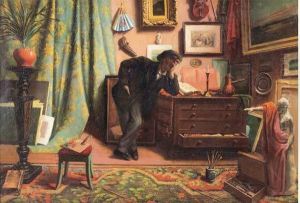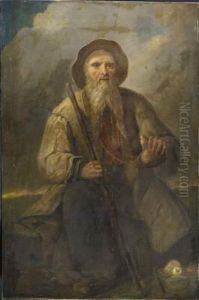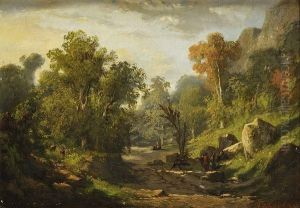Auguste Laloue Paintings
Auguste Léonard de Villemer, known professionally as Eugène Galien-Laloue (he adopted this name early in his career for reasons that remain unclear), was born on December 11, 1852, in Paris, France. Despite the common mistake referring to him as Auguste Laloue, he is most accurately recognized as Galien-Laloue. He was a French artist known primarily for his Parisian street scenes, executed most often in gouache, which is a method that involves using opaque pigments ground in water and thickened with a glue-like substance.
Galien-Laloue's Parisian street scenes captured the bustling atmosphere of Paris at the turn of the century, during a period known as La Belle Époque. He depicted the city's avenues and boulevards lined with trees, elegant shoppers, and horse-drawn carriages with a distinctive charm and immediacy. His works are characterized by their vibrant yet harmonious color palette and the lively interplay of light and shadow.
Galien-Laloue studied at the École des Beaux-Arts in Paris and began his art career not as a painter of Parisian streets but as a theatrical painter where he created sets and backdrops for theater productions. It was only later that he started painting the cityscapes that made him famous. Aside from cityscapes, he also painted landscapes, coastal scenes, and rural settings, although these are less well-known. His work was widely popular during his lifetime, both in France and abroad, and he exhibited his paintings under various pseudonyms, such as L. Dupuy, J. Lievin, and E. Galiany, which allowed him to sell his works to different art dealers without exclusivity issues.
Galien-Laloue's paintings were widely collected, and his commercial success allowed him to live comfortably. He was known to be quite private, leading a quiet life devoted mainly to his art. His works have continued to be popular on the art market, with a particular interest in his views of Paris before the impact of modernization and the widespread use of automobiles.
Eugène Galien-Laloue passed away in 1933 in Chérence, Val-d'Oise, France. Today, his paintings are held in numerous private collections and can be found in museums around the world. They serve as valuable historical records of a Paris that has since transformed and as a testament to the enduring appeal of impressionist and post-impressionist art.


